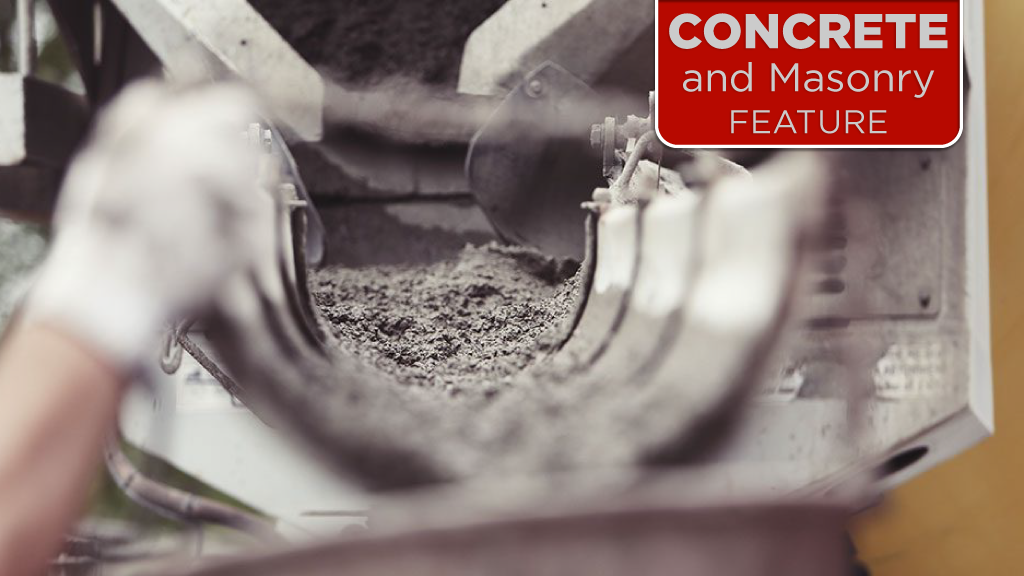The Cement Association of Canada (CAC) and the federal government are teaming up to put the cement industry on the path to net carbon zero by 2050.
They’re working on a blueprint that will provide the industry with guidance on the technologies, tools and policies that are needed to help cut down on greenhouse gas (GHG) emissions across the entire industry.
The idea is to position Canada’s cement and concrete industry as a global leader in low-carbon cement and concrete production and related clean technologies.
“It’s very important to the CAC because for the first time ever the federal government recognizes that cement and concrete is a strategic commodity in Canada,” says association president and CEO Michael McSweeney.
“Politicians have a good understanding of fir, fish and lumber, and the mining industry, chemicals industry, and automotive industry, but at the end of the day you can’t build any structure or building without concrete.”
In Canada, concrete is one the most widely used construction materials with an annual production rate of 60 million tonnes while cement, one of the main concrete components, has a production rate of 14 million tonnes.
The production of Canadian cement and concrete products resulted in the emission of 11,689 kilo tonnes of GHGs in 2008. Cement production is one of the largest sources of industrial sector emissions in the world, accounting for seven per cent of all industrial CO2 emissions. In Canada, the rate is 1.5 per cent.
The Canadian industry wants to cumulatively reduce more than 15 megatonnes of GHGs by 2030, followed by further ongoing reductions.
“We are very confident that by working with government and having government invest modest taxpayer dollars into new technology and making regulatory and legislative change, by 2030 we will be able to reduce 15 megatonnes, and then after 2030 by at least four megatonnes every year,” says McSweeney.
“We’re setting 2025 targets and 2030 targets and we’re going to set targets every five years because in our discussions with rank-and-file citizens and environmental groups, in particular, they say, ‘Well, it’s easy for you to promise net-zero concrete by 2050, I mean, will you be alive then.’ In order to have credibility we need to have near-term targets and we need to have mid-term targets and long-term targets.”
McSweeney and CAC chair Marie Glenn have signed a joint statement with federal Innovation, Science and Industry Minister François-Philippe Champagne that sets out the terms of the arrangement and the deadline for a roadmap to be completed by December that is consistent with Canada’s climate plan.
As part of the partnership, an industry-government working group has been established to support the decarbonization of the sector and has representatives from the cement and concrete industry and various government departments, environmental and Indigenous groups, innovation and technology leaders.
“We have a real robust group,” says McSweeney. “It’s hard to solve something when you’re just working on it by yourself. But once you bring in people with diverse views and experience, that’s how you spark innovation.”
With concrete being used in nearly everything built in Canada, he says it was important for the industry to be part of the solution.
“Even if it’s a tall wood building, the first floor and the underground infrastructure, the stairwells, the elevator cores are going to be concrete. I don’t think people have even given it a second thought. They don’t realize that when they flush their toilets their waste leaves the house, most likely by PVC pipes, and then it finds its way into concrete pipes and into a concrete wastewater treatment facility.”
Although Canada’s GHG emissions from concrete production are well below the world average, the industry is a big emitter on the world stage so the issue needs to be addressed, says McSweeney.
“We need to be able to set the example here in Canada before we can go after China and India and the United States. We want to be able to say to other countries, ‘Well, we have looked after our own house, you need to look after yours as well.’ ”
The industry will be taking a three-pronged approach to the problem and start by reducing the use of fossil fuels such as coal and petcoke in the production of cement. In the manufacturing of cement, 40 per cent of the emissions are from the combustion of fossil fuels used to heat the kilns to cause a chemical reaction. The industry would instead use construction waste, biosolids and recyclable plastics.
“If we reduce the amount of coal, petcoke and natural gas that is used then we can reduce that 40 per cent emissions,” notes McSweeney. “We’re after government to allow us to change our fuels. In most of the country we’re getting there.”
The industry will also be seeking to add more supplementary cementing materials like gypsum, aluminum, fly ash and slag, and ground up limestone to the mix to extend product without causing more GHGs.
Meanwhile, the industry will also develop and adopt carbon capture technology to sequester CO2. Lafarge Canada and Svante Inc. are working on a first-of-its-kind multi-phase project that involves capturing and filtering the CO2 from flue gas at the Lafarge Richmond Cement facility in British Columbia.







Recent Comments
comments for this post are closed